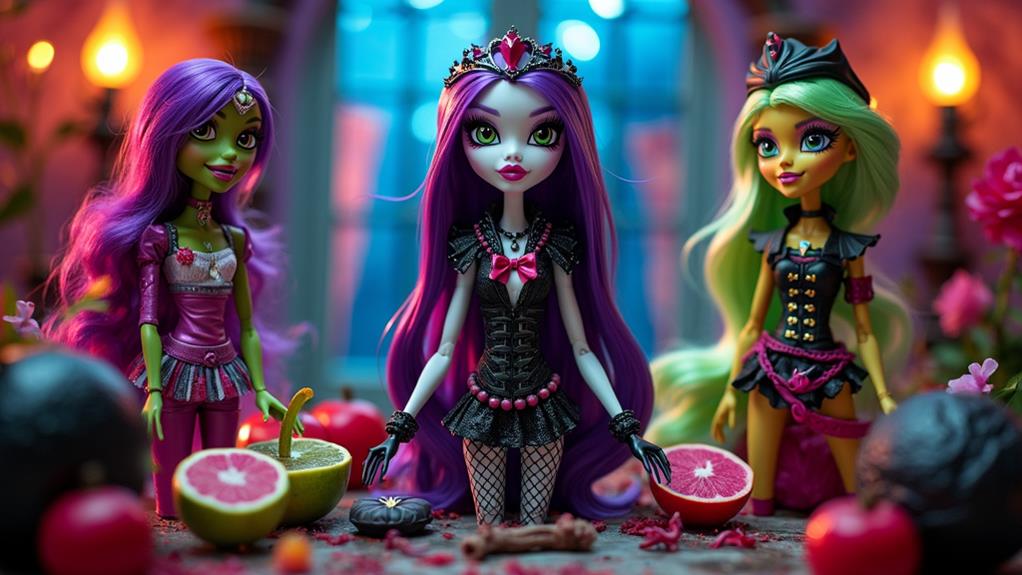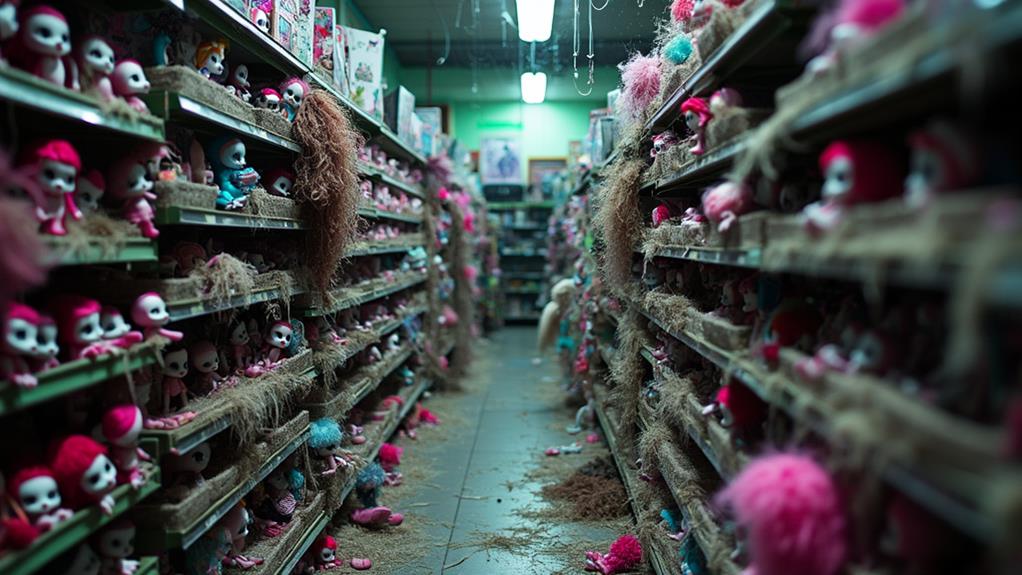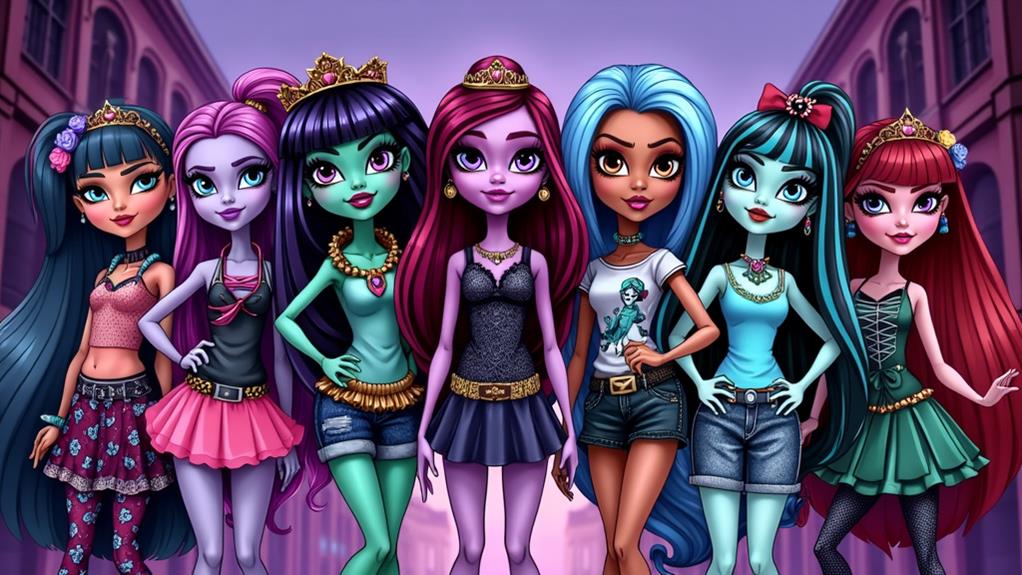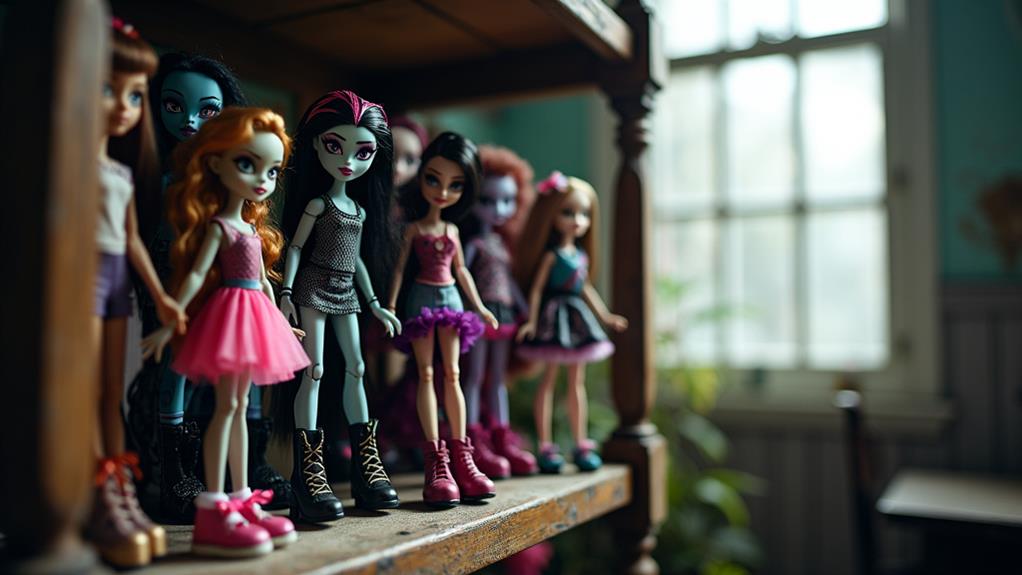Why Was Monster High Controversial?
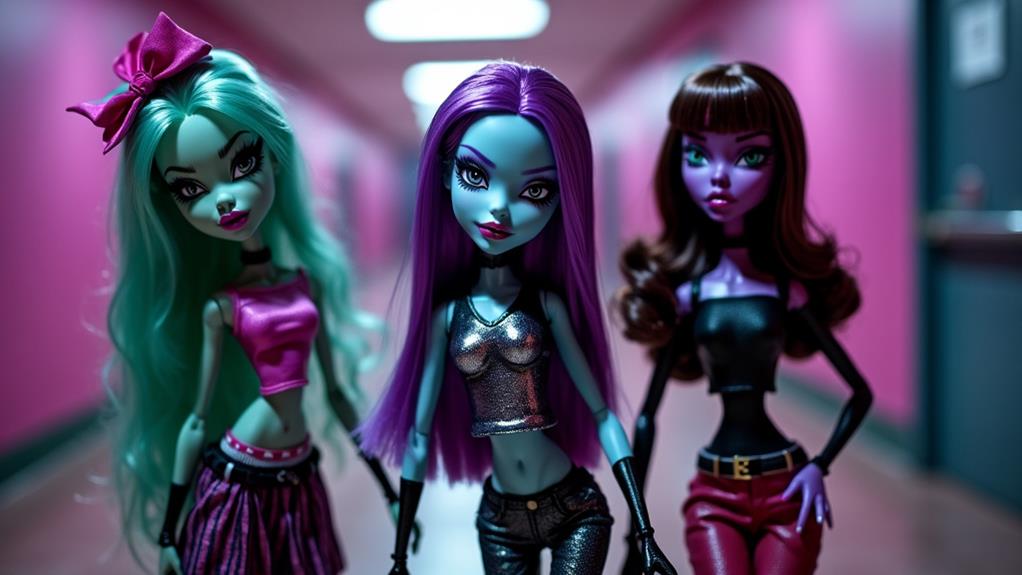
Monster High sparked controversy due to its dolls' exaggerated body features and bold fashion, which many believed promoted unrealistic body standards and mature themes for kids. It challenged traditional gender roles, raising eyebrows about children's understanding of gender identity. Furthermore, some cultural representations were critiqued for perpetuating stereotypes. Despite these concerns, the series also earned praise for promoting diversity, self-acceptance, and inclusivity. Curious to uncover more about the nuanced debate surrounding this popular franchise?
Body Image Concerns
The Monster High dolls have stirred noteworthy controversy due to their unrealistic body image portrayals. As you look at these dolls, you notice their exaggerated features: impossibly thin waists, long legs, and perfect skin. This portrayal can negatively impact young minds, as these dolls often become role models for impressionable children. You might feel concerned about how this affects their perception of beauty and self-worth.
Media influence plays a massive role in shaping how kids view themselves. When children constantly see these unrealistic body standards, it can lead to unhealthy comparisons and body dissatisfaction. You may worry that this undermines body positivity efforts, making it harder for kids to accept and love their natural bodies.
It's essential to be aware of the messages these toys send. Encouraging diverse and realistic body representations can foster a healthier self-image among children. Discussing media influence with kids can also help them critically assess what they see. By promoting body positivity, you can counteract the potential negative effects of toys like Monster High dolls and help children appreciate their unique beauty.
Fashion and Outfits
When you examine the fashion and outfits of Monster High dolls, it's clear they make bold statements. Each character's design is carefully crafted to reflect a unique blend of goth aesthetics and modern trends. The dark, edgy styles often include elements like fishnet stockings, black lace, and platform boots, setting them apart from other mainstream dolls.
Monster High's character design isn't just about looking cool; it's about expressing individuality. The dolls wear clothes that range from punk rock to Victorian goth, often featuring skulls, chains, and studs. These elements contribute to a rebellious, non-conformist image, which some parents found unsettling. They worried these looks might encourage kids to adopt likewise provocative styles.
However, the creative fashion choices also allowed for a diverse range of self-expression. Each doll's outfit is a reflection of their monster heritage, tying in backstories that include vampires, werewolves, and mummies. This merging of goth aesthetics with iconic monster lore made the dolls instantly recognizable and deeply appealing to many fans.
Yet, this very distinctiveness sparked debates. Critics argued that while the fashion was groundbreaking, it sometimes bordered on being too mature for the intended younger audience, adding to the controversy surrounding Monster High.
Gender Norms
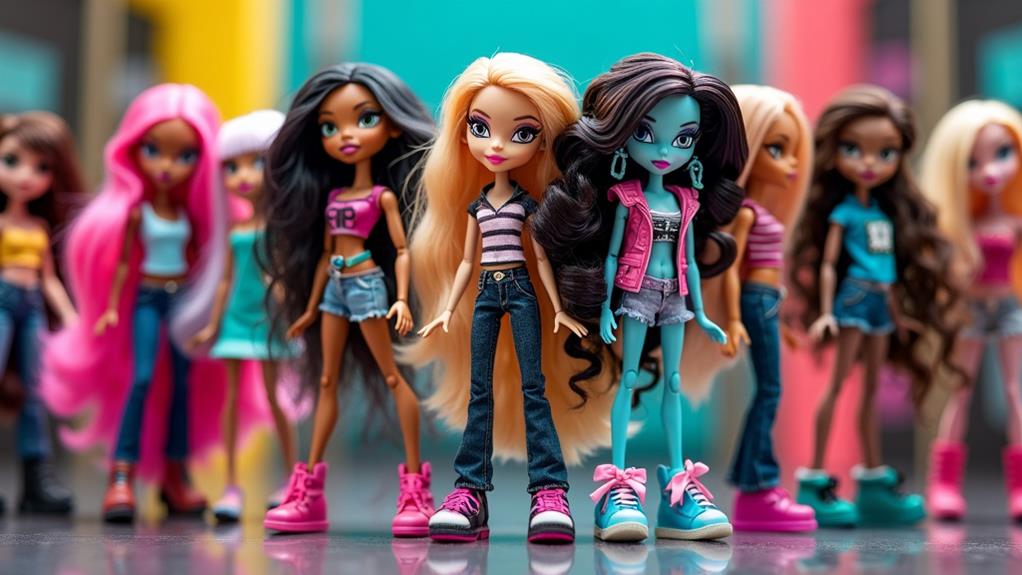
Monster High's bold fashion choices naturally lead us to another significant issue: gender norms. When you watch the show, you quickly notice how the characters challenge traditional gender roles. Instead of sticking to societal expectations, Monster High presents a world where gender identity isn't confined to rigid categories. The male characters, like Deuce Gorgon and Clawd Wolf, aren't afraid to show a softer side, while female characters like Frankie Stein and Clawdeen Wolf display strength and leadership.
You might find it invigorating that the show promotes self-expression over conformity. Yet, this very aspect stirred controversy. Many parents and critics felt uncomfortable with how Monster High portrayed gender norms. They argued that such portrayals could confuse young viewers about their own gender identity. However, supporters believe that breaking away from traditional gender norms helps foster a more inclusive environment where every child can feel accepted.
When you think about it, Monster High encourages kids to question societal expectations and be true to themselves. This progressive stance on gender identity is certainly one of the reasons why the show remains both groundbreaking and controversial.
Cultural Representation
Cultural representation in Monster High sparks both admiration and debate. On one hand, the show and its merchandise aim to celebrate diversity portrayal by introducing characters from different cultural backgrounds and mythologies. You'll find characters inspired by Egyptian, Chinese, and Native American cultures, among others. This assortment allows children to see a broader range of cultural narratives, making it easier for them to appreciate different heritages.
However, Monster High doesn't always get it right. Critics argue that some characters perpetuate cultural stereotypes rather than break them. For instance, Cleo de Nile, based on ancient Egyptian royalty, has been criticized for her overly glamorous and superficial portrayal, which can reduce a rich and complex culture to mere exoticism. Likewise, Jinafire Long, who embodies Chinese dragon lore, has faced backlash for her exaggerated features and stereotypical mannerisms.
You might find yourself torn between appreciating the show's efforts to diversify its cast and feeling uneasy about the execution. While it's clear that Monster High aims to be inclusive, it sometimes falls short by relying on cultural clichés. This duality fuels ongoing discussions about the responsible portrayal of diverse cultures in media aimed at young audiences.
Marketing Strategies
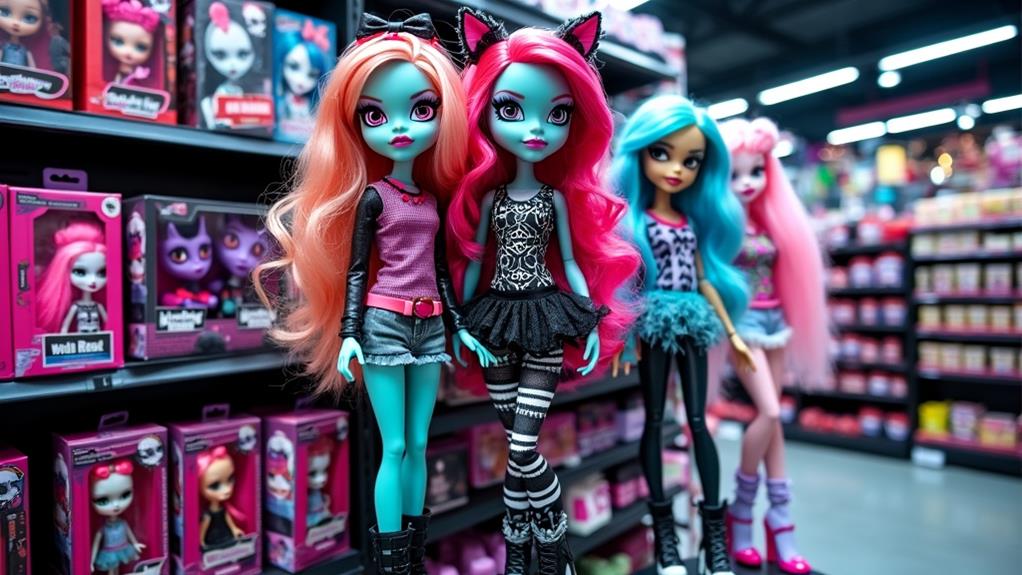
Amid the controversies, the marketing strategies of Monster High have played a crucial role in its widespread appeal. You can see how they carefully crafted their promotional tactics to captivate their target audience—primarily preteens and teenagers. They used a blend of traditional advertising and creative digital campaigns to reach these young consumers effectively.
One of the key strategies was leveraging social media platforms where their target audience spends a lot of time. They created engaging content, including webisodes, music videos, and interactive games, that resonated with young fans. These online materials not only kept the audience engaged but also encouraged them to share the content, amplifying its reach.
Additionally, Monster High utilized eye-catching packaging and in-store displays to attract attention. You'd notice that they often collaborated with popular influencers and celebrities to promote their products, further enhancing their appeal. These collaborations helped establish a sense of trendiness and relevance, making the brand more attractive to its young demographic.
Educational Value
The educational value of Monster High often gets overlooked amid its lively characters and supernatural themes. You might be surprised to learn that the series actually has a solid educational impact, especially regarding character development and social issues. Each character, regardless of whether they're a werewolf or a vampire, faces challenges that mirror real-life situations.
For example, Frankie Stein learns about self-acceptance despite her stitched appearance, teaching viewers about embracing their own uniqueness. The show addresses bullying, friendship dynamics, and the significance of standing up for oneself and others. These lessons are subtly woven into the storylines, making them more relatable and impactful for young audiences.
Moreover, Monster High promotes diversity and inclusion by showcasing characters from different backgrounds and ethnicities, albeit in a fantastical setting. It encourages kids to appreciate differences and fosters an understanding of different cultures and perspectives. This is particularly vital in the present globalized world, where empathy and acceptance are key skills.
In essence, while Monster High might look like just another animated series, it's filled with valuable lessons that contribute to character development and social awareness, making its educational impact quite significant.
Fan and Critic Reactions
Often generating a mix of enthusiastic praise and sharp criticism, Monster High has sparked a variety of reactions from both fans and critics alike. If you're a fan, you've likely been drawn to the series' unique characters and its inclusive message. Many fans appreciate the diverse representation of body types, ethnicities, and backgrounds, leading to high levels of fan engagement. Online communities, fan art, and cosplay have all flourished, creating a lively culture around Monster High.
Critic reviews, on the other hand, have been more divided. Some praised Monster High for tackling issues like self-acceptance and friendship in a way that connects with young audiences. They've noted that the series provides positive role models and encourages individuality. However, not all reviews have been glowing. Critics have often raised concerns about the dolls' exaggerated features, arguing that they promote unrealistic body standards. Some have also questioned the commercial nature of the franchise, suggesting that it prioritizes selling merchandise over delivering quality content.

